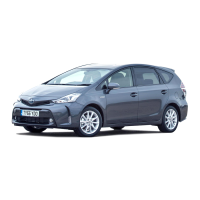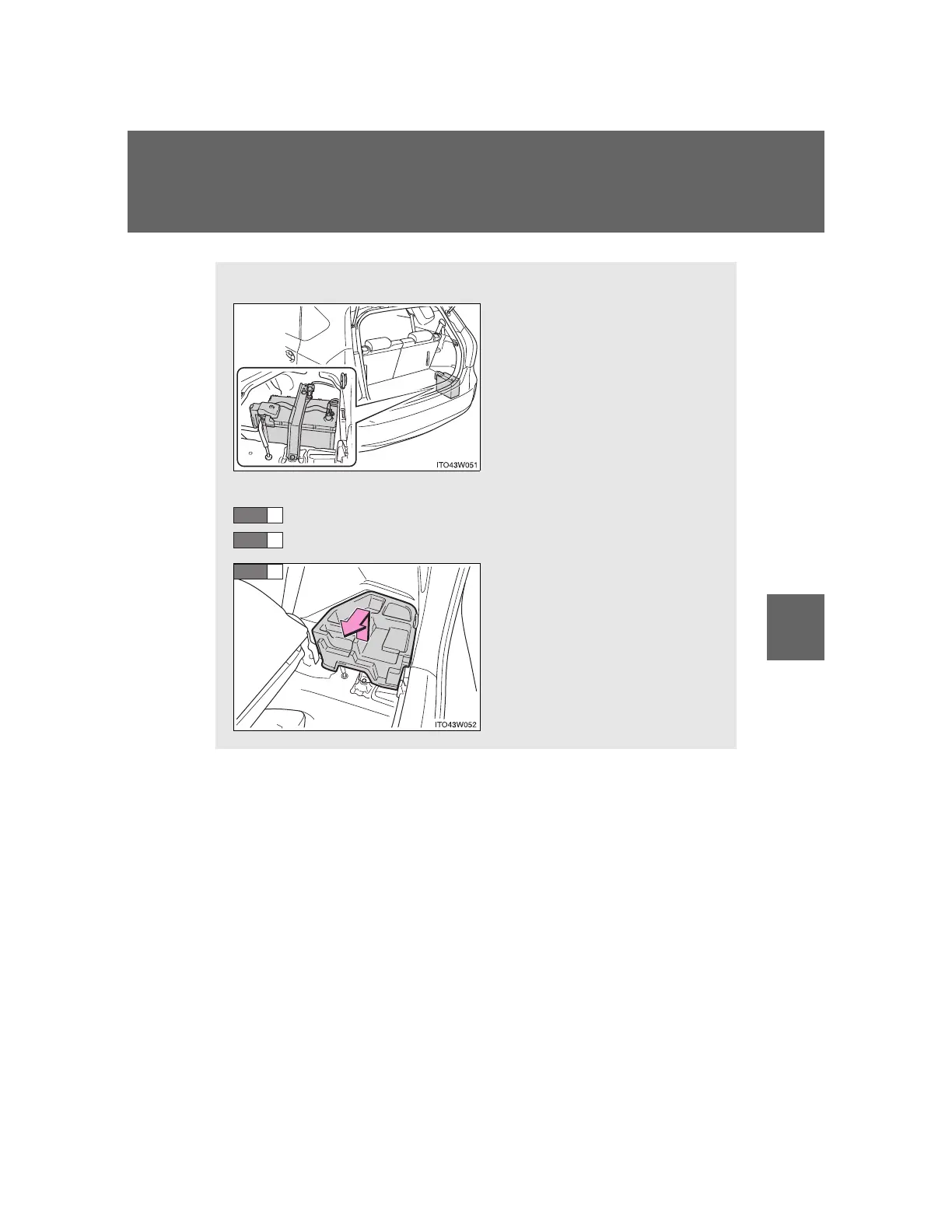4-3. Do-it-yourself maintenance
Location
The 12-volt battery is located
in the right-hand side of lug-
gage compartment.
Removing the 12-volt battery cover
Remove the center and right side deck boards. (P. 377)
Remove the center auxiliary box. (P. 378)
Remove the right side auxil-
iary box.

